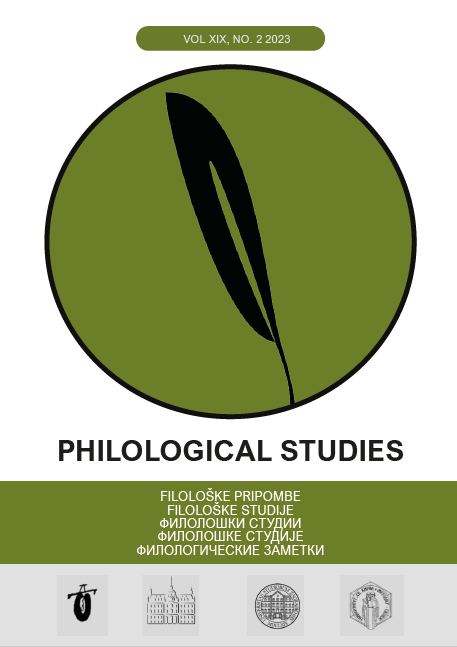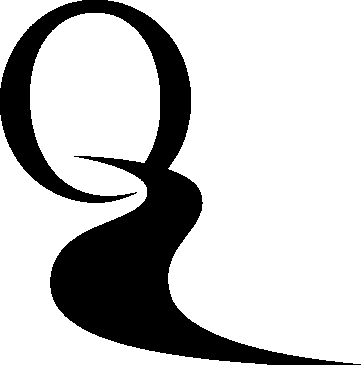RAZNOLIKOST UPORABE IMENA BOJA U OPISIMA UČENIKA MLAĐE ŠKOLSKE DOBI
Сажетак
U procesu usvajanja jezika u jezičnoj fazi, koja započinje kada dijete navrši prvu godinu, pa sve do treće godine, kada dijete ovlada temeljima materinskoga jezika, imenice i glagoli temeljne su vrste riječi koje djeca koriste u procesu komunikacije. Usvajanje jezika ovisit će o mnogim čimbenicima: spolu djeteta, broju djece u obitelji, okolini kojoj je dijete izloženo, medijima koje dijete konzumira, načinu obraćanja starijih ukućana, uključenosti u dječji vrtić, obrazovanju roditelja te organskom idiomu kojemu je dijete izloženo. U toj ranoj dobi dijete imenuje sve što ga okružuje te na taj način upoznaje svijet oko sebe. Boje su sastavni dio njegova svijeta te vrlo brzo nakon što imenuje određenu stvar ili osobu započinje usvajati imena osnovnih boja. Jednako tako, ukoliko dijete uči strani jezik, jedan od privih poticaja usmjeren je ovladavanju imena boja pa su tako i mnogi crtani filmovi namijenjeni djeci jasličke dobi sadržajno povezani s bojama. S vremenom dijete proširuje svoj vokabular usvajajući nove riječi, slušajući priče te osobito bajke koje obiluju raznolikim pridjevima i uporabom boja u denotativnom, ali i konotativnom značenju. Zanimljivo je da djeca boje često rabe u opisu osobe, vanjskoga i unutrašnjega prostora, kako u usmenom, tako i u pisanome obliku. Iako svoje znanje o bojama s godinama proširuju, vrlo često u aktivnom leksiku ostaju prisutne tek temeljne boje: plava, crvena, žuta, smeđa, crna, bijela i zelena. Upravo zato cilj je ovoga istraživanja ispitati koliko djeca rane školske dobi (7. - 10. godine) u svom pisanom radu koriste boje u opisu osobe, unutarnjeg i vanjskog prostora. Istraživanje će biti eksperimentalno tako što će se učenicima održati jedan sat Hrvatskoga (materinskoga) jezika koji će aktivirati lekseme vezane uz boje uz pomoć tekstova o bojama i jezičnim igrama. Potom će učenici pisati sastavke kojima će se provjeriti aktivna uporaba „boja“ u pisanome izrazu. Istraživanjem je potvrđeno da će učenici u svojim radovima upotrijebiti do pet osnovnih boja te vrlo malen broj različitih pridjeva, što upućuje na sve siromašniji rječnik djece mlađe školske dobi unatoč brojnim poticajima kojima su djeca današnjice izložena.
Downloads
Референце
Aladrović Slovaček, Katarina (2019): Od usvajanja do učenja hrvatskoga jezika [From adoption to learning Croatian]. Zagreb: Alfa.
Aladrović Slovaček, Katarina (2018): Kreativne jezične igre [creative language games]. Zagreb: Alfa.
Aladrović Slovaček, Katarina/Agić, Željko (2019): „Umni leksikon djece mlađe školske dobi [Mental lexicon of children of younger school age].“ In: Matešić, M. i Vlastelić, A. (ed.) Um i jezik [Mind and language]. Rijeka, HDPL i Filozofski fakultet Sveučilišta u Rijeci, 187-200.
Aladrović Slovaček, Katarina/Vukić, Ljerka (2016): „Što nam o funkcionalnoj pismenosti govore rezultati državne mature?“ [Functional literacy and the results in high school final exam in Croatian and English language]. In: Udier, Sandra Lucija i Cergol i Kovačević, Kristina, Metodologija i primjena lingvističkih istraživanja [Applied linguistic research and methodology]. Zagreb, Srednja Europa i HDPL, 267-280.
Baričević, Valentina (2008): Jezična raščlamba Ivanova evanđelja [Linguistic analysis of John's Gospel]. Diplomski rad. Zagreb: Filozofski fakultet u Zagrebu.
Barić, Eugenija et al. (1997): Hrvatska gramatika [The Croatian grammar]. Zagreb: Školska knjiga.
Cvikić, Lidija/Aladrović Slovaček, Katarina (2016): “ŠTO JE OPISNO U OPISIMA? (Uporaba pridjeva u opisivačkim tekstovima govornika hrvatskoga jezika mlađe školske dobi).” [What is Descriptive in Descriptions? (Usage of adjectives in descriptive texts written by Croatian native speakers at early school age)]. In Badurina, Lada (ed.), 10. Riječki filološki dani [Rijeka Philology Days]. Rijeka, Filozofski fakultet Rijeka: 449-464.
Cvikić, Lidija/Jelaska, Zrinka (2008): Procjenjivanje i vrjednovanje u hrvatskom jeziku [Assessment and Evaluation in Croatian Language]. Lahor, 1 (5), 115-125.
Čudina-Obradović, Mira (2000): Kad kraljevna piše kraljeviću [When the princess writes to the prince]. Zagreb: Udruga Korak po korak.
Miljević-Riđički, Renata et al. (2000): Učitelji za učitelje [Teachers for teachers]. Zagreb: IEP i UNICEF.
Nikčević-Milković, Anela (2017): “Utjecaj obrazovne razlike spola na kvalitetu pisanog izražavanja učenika.” [The impact of educational levels and gender on the quality of written expression]. Život i škola: časopis za teoriju i praksu odgoja i obrazovanja. 5/2: 55-66.
Pavličević-Franić, Dunja/Aladrović Slovaček, Katarina (2017): Mastering Croatian Standard Language in a Plurilingual School Environment. Croatian Journal of Education, 19 (Sp. Ed. 2), 61-74.
Pavličević-Franić, Dunja/Aladrović Slovaček, Katarina. (2011): Utjecaj načina poučavanja na motivaciju i stav učenika prema hrvatskom jeziku kao nastavnom predmetu [Influence of teaching methods on pupil motivation and attitude towards Croatian as a school subject]. Napredak, 152 (2), 171-188.
Pavličević-Franić, Dunja (2011): Jezikopisnice [Language books]. Zagreb: Alfa.
Pavličević-Franić, Dunja (2005): Komunikacijom do gramatike [Communication to grammar]. Zagreb: Alfa.
Radić i sur. (2010): Udžbenik kao poticaj ili prepreka leksičkom razvoju [A textbook as facilitating or hindering factor of lexical development]. Lahor, 1 (9), 43-59.
Težak, Stjepko/Babić, Stjepan (2009): Gramatika hrvatskoga jezika [The grammar of the Croatian language]. Zagreb: Školska knjiga.
Visinko, Karol (2010): Jezično izražavanje u nastavi hrvatskoga jezika: Pisanje [Language expression in Croatian language classes: Writing]. Zagreb: Školska knjiga.
Сва права задржана (c) 2023 Katarina Aladrović Slovaček, Marija Vresk

Овај рад је под Creative Commons Aуторство-Nекомерцијално-Без прераде 4.0 Интернационална лиценца.
Philological studies © 2019. This work is licensed under a Creative Commons Attribution-Noncommercial-No Derivative Works 3.0 Unported License










